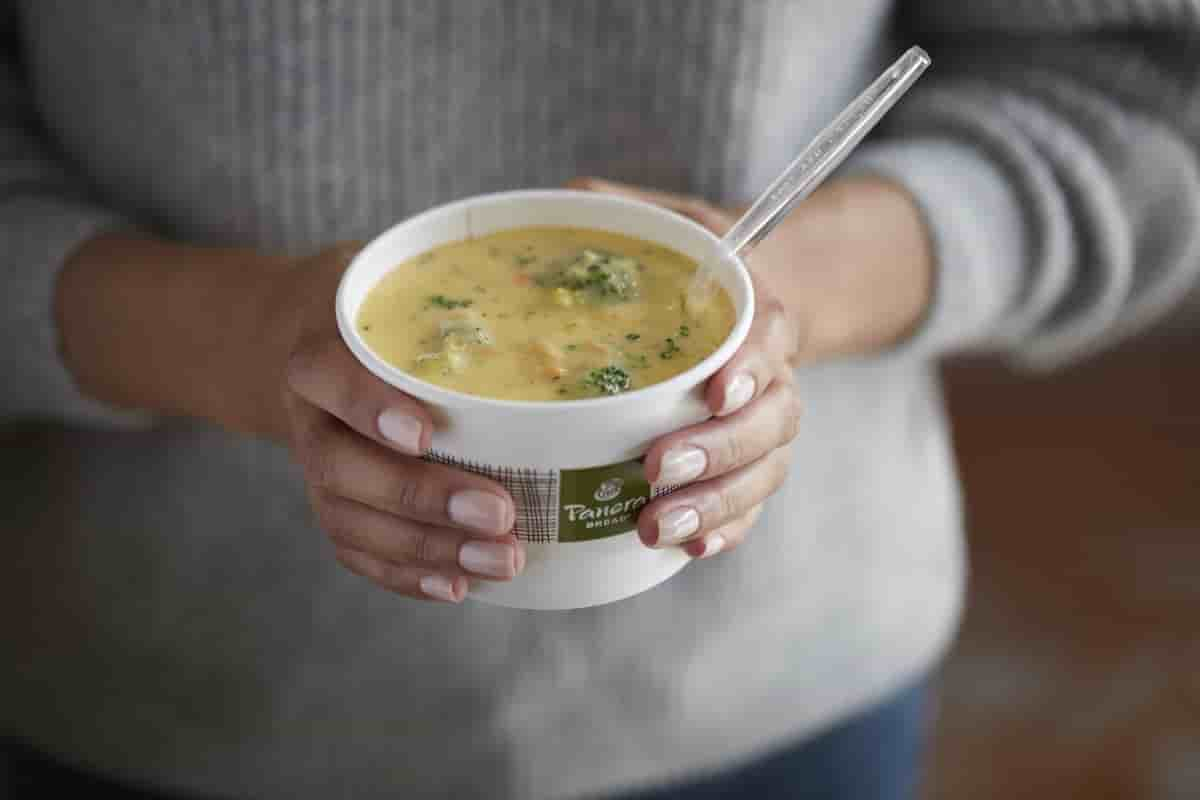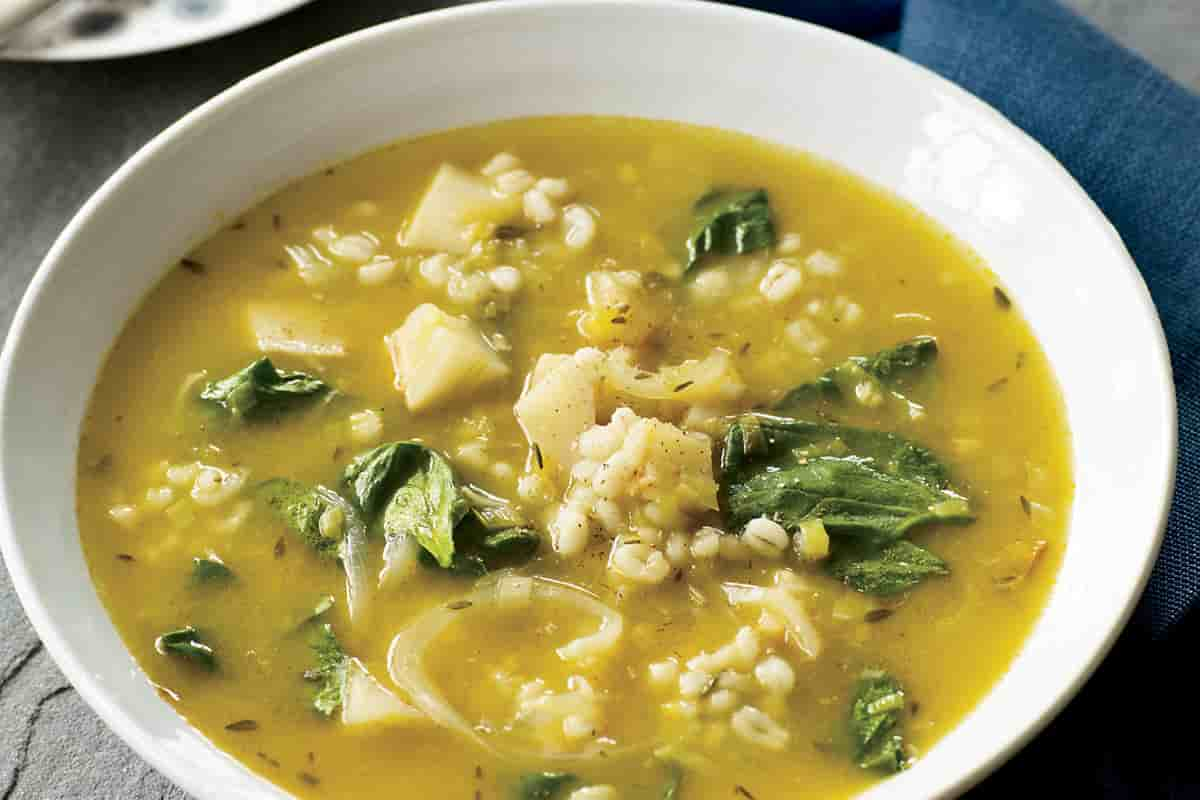To consume the soups made with canned barley on your diet you should know it is not gluten free. Barley is one of the top three gluten-containing grains.
Due to the high probability that goods produced with barley include gluten protein, those who follow a gluten-free diet should avoid these products.
You’ll also need to be extremely careful to avoid barley. Food makers are required by law to mark their goods if they include wheat (the primary grain that contains gluten), but they are not required to label items containing barley as a possible allergy risk.
Foods that contain enough barley to make you sick may not have that ingredient listed on the label. If you wish to avoid eating barley, you need to get familiar with the names of these barley-based compounds.
You can find barley-based ingredients in a wide variety of products, but you might not know it. The gluten proteins found in wheat, rye, and barley—all closely related grains—are troublesome for those with celiac disease and non-celiac gluten sensitivity. The barley gluten protein is referred to as hordein in the scientific literature.
You may find hordein in the plant’s grain, which is also called seeds. The vast majority of products that use barley utilize the plant’s grains and seeds (think of the barley pearls you often see in hearty winter soups).

Since this is the case, you may assume that everything made with barley also contains gluten. Since malt is made by germinating barley grains and then drying them, it follows that products containing malt will also include gluten. Barley grass, which refers to the immature stalks of the plant that have not yet developed grain kernels, is the subject of much controversy about the presence of gluten.
Despite the presence of barley grass in certain vitamin products, the absence of gluten is specifically stated on the labels of these items. However, the great majority of experts advise extreme caution when choosing whether or not to consume such products.
In addition to being one of the first cereal grains cultivated, barley also has a fascinating history of being used for many diverse uses. It has been brewed into mead and beer, ground into flour, transformed into tea, and even used as currency throughout the course of many centuries.
Lower-class Europeans in the Middle Ages ate a lot of bread made from barley since it was cheap and readily available (wheat was reserved for those who were wealthier and better connected). Nowadays, barley is often used as a sugar substitute in manufactured foods.
Common examples of this approach may be seen in cereals like cornflakes and crispy rice. Some granola and multi-grain bars really include barley, and the grain is used in the production of a broad range of candy bars, notably those including crispy rice.

Gluten may be found in a wide range of barley-based goods, including beers (which are made by fermenting barley), malted milk, malted sweets, and other malted products, barley flour (which is occasionally used in baking), and barley pearls. Soups like vegetable barley and beef barley are common examples of prepared foods that use barley.
However, the manufacturer will likely include barley as one of the ingredients, so you’ll know to avoid it. Remember that many gluten-free meals use rice for wheat or barley.
Many gluten-free items, for instance, swap out vegetable barley soup for vegetable rice soup. Gluten never makes its way into the rice.
However, producers may avoid disclosing barley or barley-based components by using a general word like “natural flavorings,” which does not need disclosure under current food labeling requirements.
Products labeled as having “smoke flavoring,” for instance, usually include barley, and caramel coloring is commonly derived from barley malt.
Some companies voluntarily include “natural flavorings (barley malt)” as an ingredient on their product labels to alert consumers to the presence of barley. The word “malt,” “malt sugar,” or “malt syrup” are all terms that may be used to describe barley on food labels.

Maltose and maltodextrin are both gluten-free alternatives to sugar. Barley, like other grains, is a gluten-containing food. To those who aren’t adhering to a gluten-free diet, the only grains allowed are wheat, barley, and rye.
Gluten, a protein that causes the immune reaction seen in people with celiac disease, may be found in all three of these cereals. Barley is a common ingredient in many dishes, although it is not required by law to be listed as such.
Anyone with gluten intolerance should avoid consuming any products containing barley or any ingredient derived from barley. This is made of a broad array of daily components. However, there are times when barley grass does not have gluten.
However, persons who have celiac disease should avoid ingesting foods that contain this component because of the very high risk it presents.
Those on a gluten-free diet are generally warned to avoid barley grass at all costs. If barley grass plants are harvested before they sprout and develop seeds, then gluten-free barley grass may be obtained.
Since certain varieties of barley grass may produce early sprouts, it is still possible that they contain gluten. Some methods of testing for gluten content may overestimate or underestimate the amount of barley in a product.

Several celiac disease experts recommend getting in touch with the manufacturer before buying any gluten-free food that contains barley grass.
Inquire as to the manufacturer’s policy on testing for gluten in both components and finished products, as well as the testing processes used to determine if the product is gluten-free. Pearl barley, also known as a type of barley, is a gluten-containing grain.
Pearl barley is a sort of barley grain that has had its bran and hull removed, whereas hulled barley still retains its husk and bran layers.
Barley that has been “pearled” is also known as “pearl barley.” Hulled barley, which still has its husk and bran layers, is generally thought to be more nutritious than pearl barley. Regardless, hulled barley and pearl barley both contain gluten and cannot be considered gluten-free. As an appetizer, red barley soup is one of the most common types of soup seen in restaurants.
It is also one of the most popular types of soup overall.
It is important to note that contrary to the common belief that barley soup is served as an appetizer, this soup is regarded to be a full meal since it contains a variety of essential nutrients including vitamins and minerals.
During the colder months of the year, you may make this nutritious and delicious soup as a full dinner for the family to enjoy together.
We can guarantee that if you practice making red barley soup at home a few times, you will be able to create a version that is on par with the vibrant and glazed soups served in restaurants. Even those who have never cooked before will have no trouble preparing this flavorful soup most effectively. All it takes is a few simple ingredients and a few minutes in the kitchen.

The preparation of this soup will allow you to take advantage of the many benefits offered by barley.
It is possible to make enough red barley soup for four persons using the number of materials called for in this recipe. Simply increase or divide the quantity of each ingredient to produce more or less soup, depending on your preference.
Dietary health is essential, so make it a top priority.
Due to our adherence to the highest quality standards, we will always provide our clients with healthful canned foods that taste great and exceed their expectations. By incorporating moral farming practices, exhaustive strategies for food safety, a commitment to openness, and cutting-edge manufacturing, we provide people access to a level of healthy living that has never been available before. Our company’s goal is to improve global health and environmental sustainability by raising awareness about those canned foods that are the most nutrient-dense while also having the least ecological footprint.
One of our key aims, as we strive to become the new global leader in the fresh produce sector, is to fully tap the potential of the business by using the combined expertise of all of our employees and the worldwide reach of our local operations.
Our vertically integrated supply chain will allow us to further optimize the supply chain from farm to fork, forging the shortest route to market, while the well-respected Sagharcanned brand will be the driving force behind innovation and new product development, adding value and providing a tangible point of differentiation.
Doing so is critical if we want to serve consumers all over the world with a product that lives up to their needs and wants and earns the loyalty of our customers.

Your comment submitted.